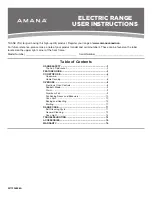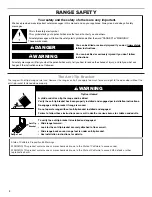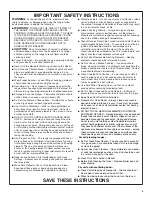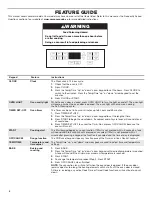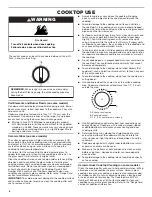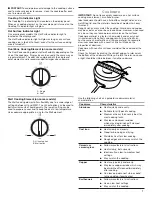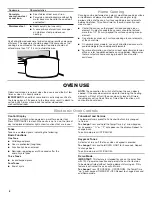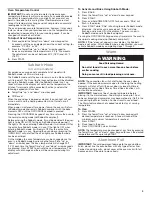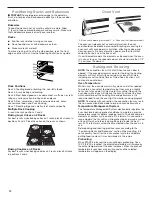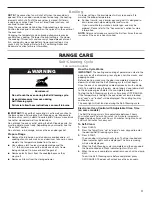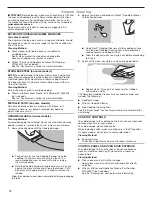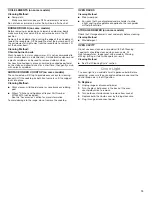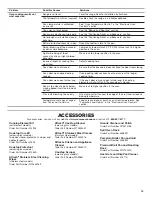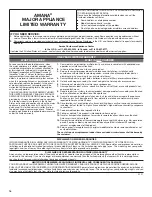
7
IMPORTANT:
To avoid permanent damage to the cooktop surface
and to make soils easier to remove, clean the cooktop after each
use to remove all soils.
Cooktop On Indicator Light
The Cooktop On indicator light is located on the display panel.
When any cooktop element on the console panel is turned on, the
Cooktop On indicator light will glow.
Hot Surface Indicator Light
On ceramic glass models, the Hot Surface indicator light is
located on the display panel.
The Hot Surface indicator light will glow as long as any surface
cooking area is too hot to touch, even after the surface cooking
area is turned off.
Dual Zone Cooking Element (on some models)
The Dual Zone cooking element offers flexibility depending on the
size of the cookware. Single size can be used in the same way as
a regular element. The dual size combines both the single and
outer elements and is recommended for larger size cookware.
Melt Cooking Element (on some models)
The Melt cooking element offers flexibility due to a wide range of
settings between HI and MELT. The Hi heat option can be used to
boil small amounts of liquid quickly. The lowest setting can be
used to prepare sauces and to keep foods at a low temperature.
Use cookware appropriate in size for the Melt element.
Cookware
IMPORTANT:
Do not leave empty cookware on a hot surface
cooking area, element, or surface burner.
Ideal cookware should have a flat bottom, straight sides, and a
well-fitting lid, and the material should be of medium-to-heavy
thickness.
Rough finishes may scratch the cooktop. Aluminum and copper
may be used as a core or base in cookware. However, when used
as a base, they can leave permanent marks on the surfaces.
Cookware material is a factor in how quickly and evenly heat
is transferred which affects cooking results. A nonstick finish
has the same characteristics as its base material. For example,
aluminum cookware with a nonstick finish will take on the
properties of aluminum.
Cookware with nonstick surfaces should not be used under the
broiler.
Check for flatness by placing the straight edge of a ruler across
the bottom of the cookware. While you rotate the ruler, no space
or light should be visible between it and the cookware.
Use the following chart as a guide for cookware material
characteristics.
Cookware
Characteristics
Aluminum
■
Heats quickly and evenly.
■
Suitable for all types of cooking.
■
Medium or heavy thickness is best for
most cooking tasks.
■
May leave aluminum residues
which may be diminished if cleaned
immediately after cooking.
Cast iron
■
Heats slowly and evenly.
■
Good for browning and frying.
■
Maintains heat for slow cooking.
■
Rough edges or burrs may scratch the
cooktop.
Ceramic or
ceramic glass
■
Follow manufacturer’s instructions.
■
Heats slowly, but unevenly.
■
Ideal results on low-to-medium heat
settings.
■
May scratch the cooktop.
Copper
■
Heats very quickly and evenly.
■
May leave copper residue which may
be diminished if cleaned immediately
after cooking.
■
Can leave a permanent stain or bond
to the cooktop if overheated.
Earthenware
■
Follow manufacturer’s instructions.
■
Use on low heat settings.
■
May scratch the cooktop.
A
B
A. Single
B. Dual
A. Hi heat option
B. Melt option
A
B
1
2
3
4
5
6
7
8
9
1 0
1 1
1 2
1 3
1 4
1 5
1 6
1 7
1 8
1 9
2 0
1
2
3
4
5
6
7

